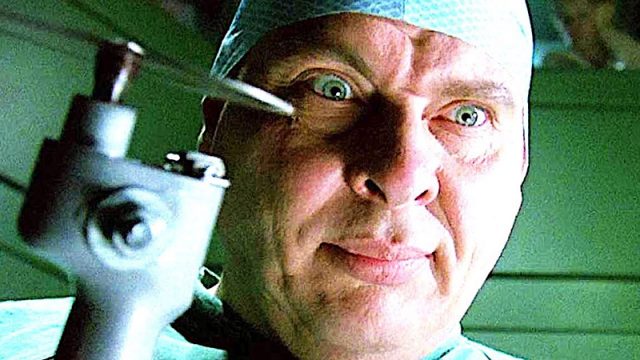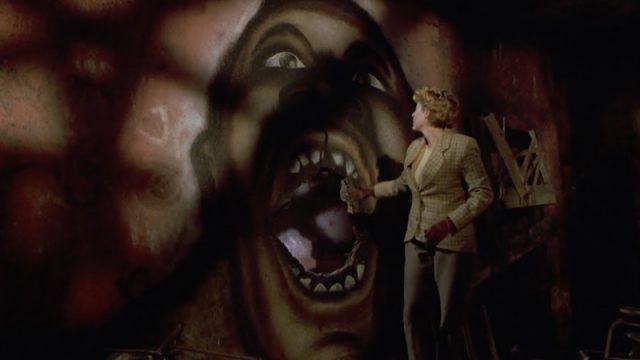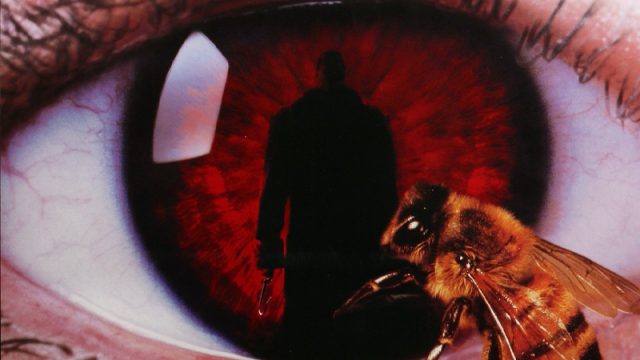Horror aficionados will likely crucify me once they learn that, up until this last weekend, I had never seen 1992’s Candyman. In fact, I didn’t even know what Candyman was until Jordan Peele and Nia DaCosta’s sequel caught my eye.
Can you blame me? After all, over the years I’ve seen any number of Freddy Krueger, Jason Voorhees, Chucky, and Michael Myers sequels, reboots, and remakes, but, for whatever reason, never saw Tony Todd’s hook-sporting villain stand alongside his Hollywood horror compatriots. In fact, up until I saw Candyman, my recognition of Todd came from his brief, though effective, performance as a different kind of “man” altogether in Michael Bay’s The Rock:
I do recall friends talking about Candyman in high school, but my wild imagination assumed it was more this:

Than this:
All that to say, I had no idea what I was getting into when I sat down to watch Bernard Rose’s award-winning film (based on The Forbidden by Clive Barker). Truth be told, I was actually quite impressed.
Candyman has its fair share of violent, bloody moments, but the film never sinks to slasher film territory. In fact, the entire production was a lot more artistic than I expected and does a fine job developing its characters, building tension, and setting up its creepy-as-hell plot.
RELATED: Candyman Scares Up the Box Office, Tops $20 Million First Weekend
In other words, this feels more like a precursor to Hereditary and Midsommar than anything involving machetes and masked boogie men.
Surprisingly, Rose (taking a cue from Steven Spielberg’s Jaws) keeps the titular villain off-screen until about the halfway point of the film and wisely spends the first half following Virginia Madsen’s grad student Helen Lyle as she explores Candyman’s tragic backstory.
In a way, you actually empathize with Candyman, or, at the very least, understand why he does what he does.
Rose and cinematographer Anthony B. Richmond did a great job creating a sinister atmosphere with ghastly imagery and uniquely designed sets like this one:

They also sprinkle in some social commentary. At one point, Helen is assaulted by a gang and remarks how the news makes a big deal out of a white woman being assaulted but fails to report anything about the numerous victims killed in the projects every day.
Indeed, as the videos above explain, Candyman’s love affair with a married white woman in the late 1800s ultimately led to his torture and eventual death-by-bees.
Speaking of which, there are a lot of bees in this flick, particularly in the film’s most memorable scene during which Todd gleefully allows them to crawl all over his mouth:
If that weren’t enough, Helen is painted as a tragic figure as well. In fact, you might even call Candyman her origin story since everything that occurs over the course of the film — particularly in regards to her bastard husband — leads to her eventual transformation into an urban myth, ala Candyman.
The character deserves none of the bull thrown at her either, which makes the story all the more heartbreaking. But, hey, that makes for compelling cinema and results in some genuinely amazing moments such as the bit where Helen wakes up immediately following her first encounter with Candyman and has herself a bloody Hangover moment.
Later, Candyman kills her psychiatrist in shocking fashion, before performing a reverse Peter Pan right out the window:
Crazy stuff.
There are other brutal scenes, though, surprisingly, much of the carnage is seen after the fact — and remains all the more effective as a result.
Through it all, Todd and Madsen are terrific together on the screen. The latter carries the movie on her shoulders and does a nice job, even amidst some truly awful acting from some of the supporting cast — seriously, what’s with that actress playing the girlfriend?
All of these elements come together to form a surprisingly intricate horror film that opts for deep cuts over tired jump scares. And while the sequels sound more like the film I thought Candyman was going to be, the original deserves greater recognition as a uniquely crafted ’90s horror film that certainly stays with you long after the credits roll.
Also, special shout out to Philip Glass, whose synth-heavy score effectively propels the narrative forward. Am I the only one whose love of Rugrats was immediately tarnished after listening to the music?










